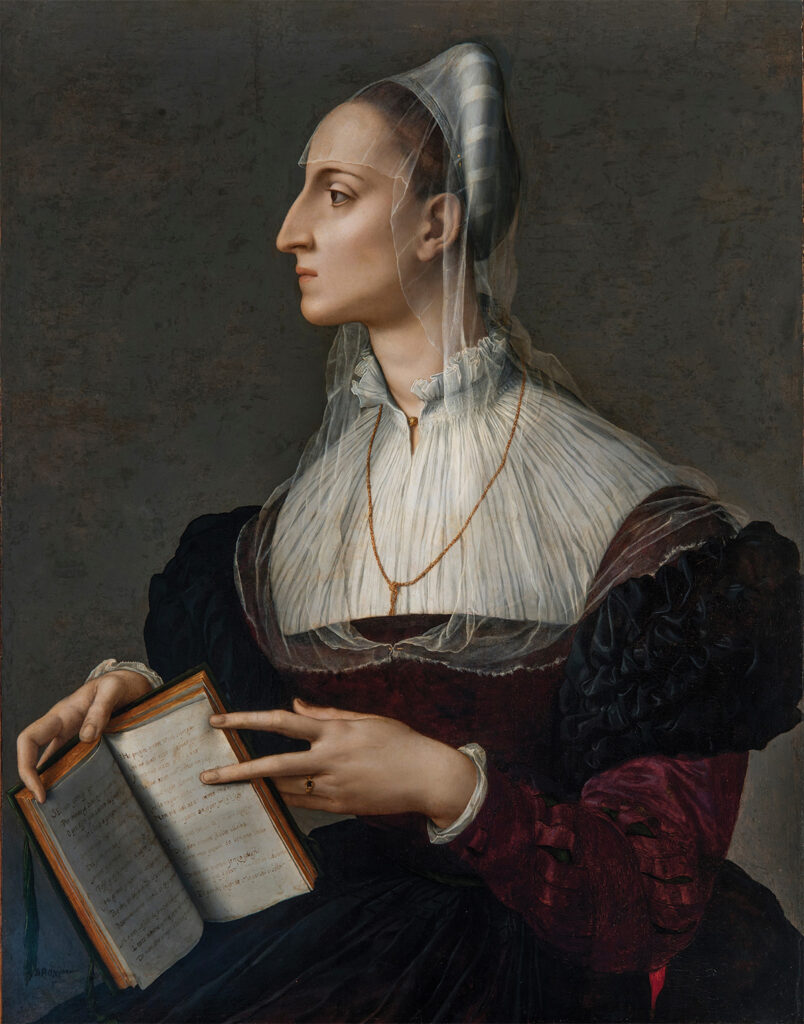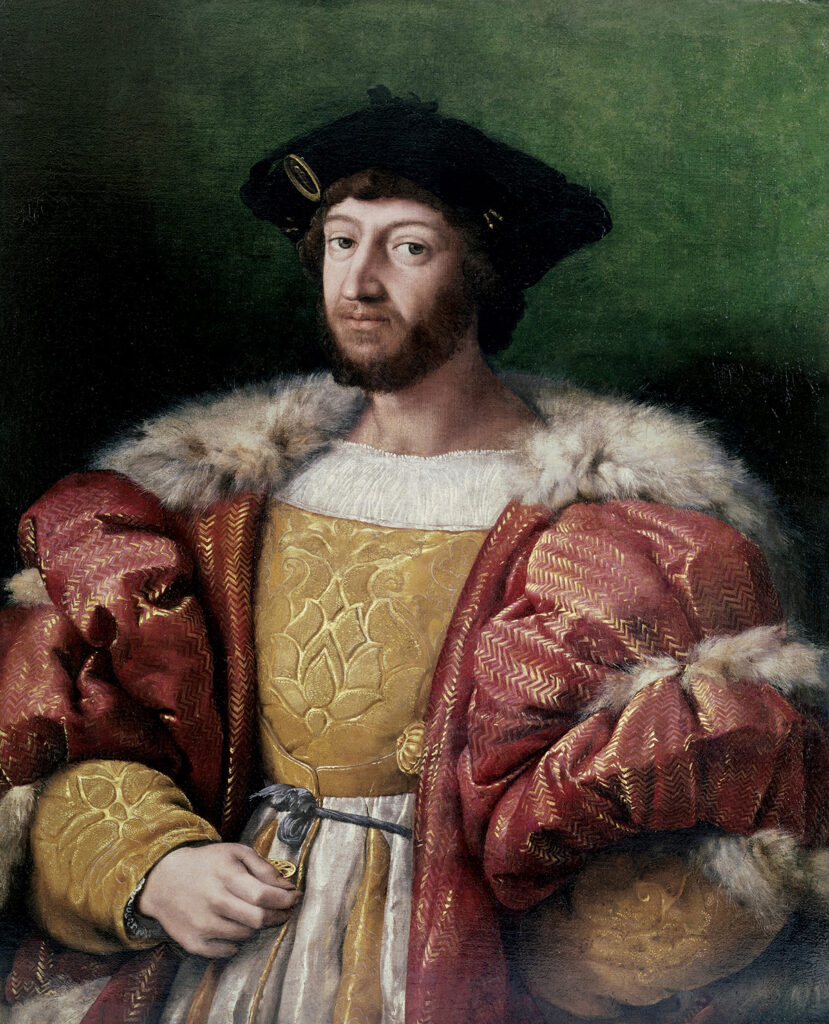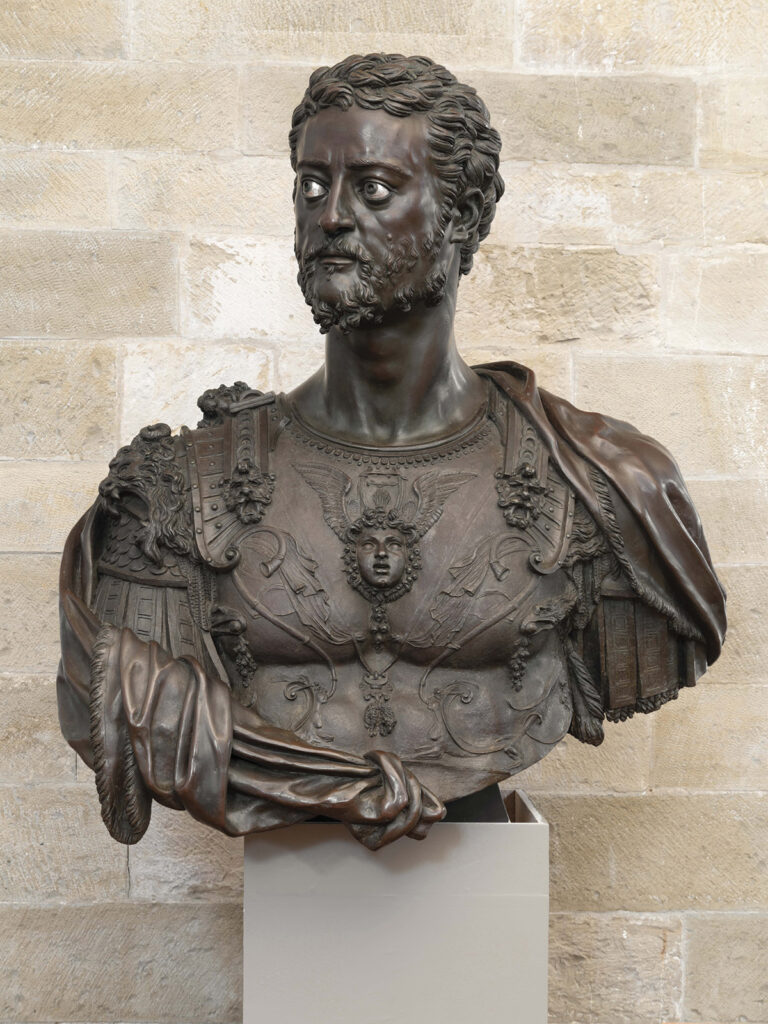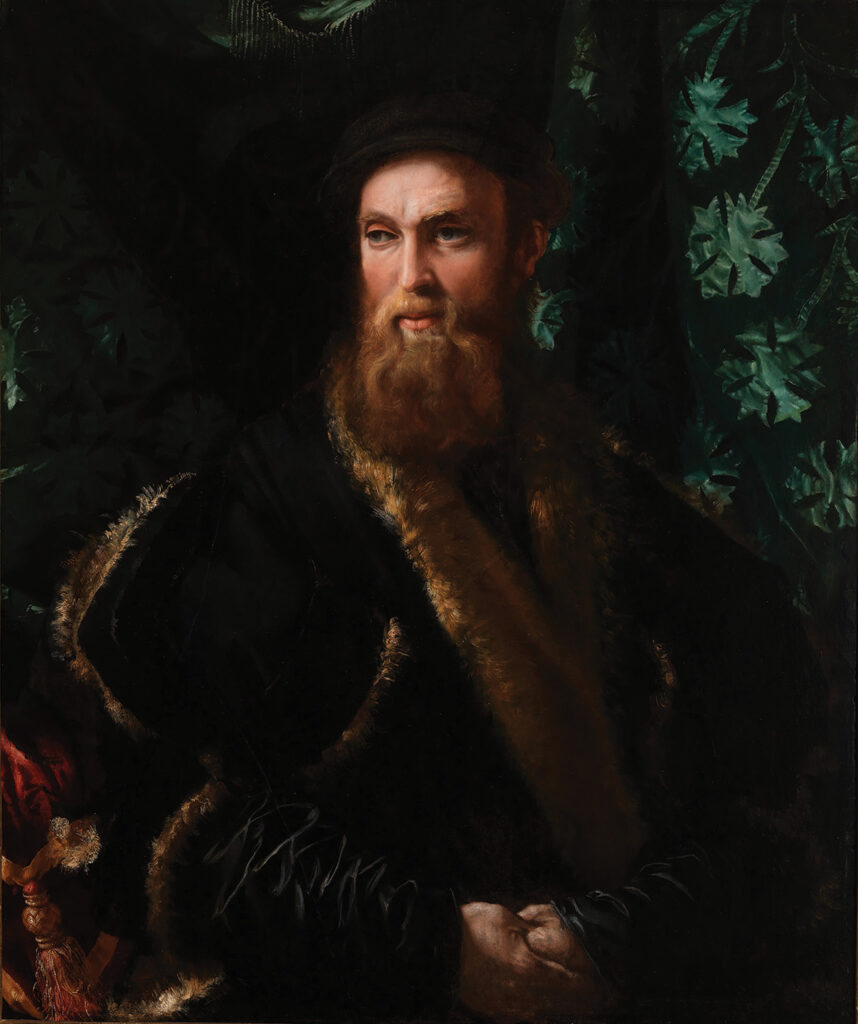Exploring some of the greatest Medici rulers of Florence through a series of portraits, this show spans just 58 years – from 1512 with the transformation of the city from a republic into a duchy – to 1570.
Cosimo I de Medici who became Duke of Florence in 1537 following the assassination of Alessandro de’ Medici, was an expert in the deployment of ‘soft power’ – using culture for political ends.
Portraits of the ducal family were intended to project power, assert the continuity of the dynasty and convey cultural refinement. Pride it seems knew no bounds. Works in which the sitter is portrayed as a mythological or Biblical figure include Bronzino’s allegorical portraits of Cosimo as Orpheus and of his son Giovanni as St. John the Baptist.
Cosimo’s relentless efforts to promote Florence as the capital of the Italian Renaissance is evidenced in Giorgio Vasari’s famous Lives of the Artists, which was dedicated to Cosimo and for centuries has imposed a Florence-centered narrative of Renaissance art.
One of the six sections in this show explores the two competing styles at Cosimo’s court: Bronzino’s Florentine-based art and the pan-Italian style of Salviati. Cosimo’s preference for a distinctively Florentine artistic language led to Bronzino’s portraits becoming the official style of the ruling elite.
Until 11th October at The Metropolitan Museum of Art, New York, USA
www.metmuseum.org




